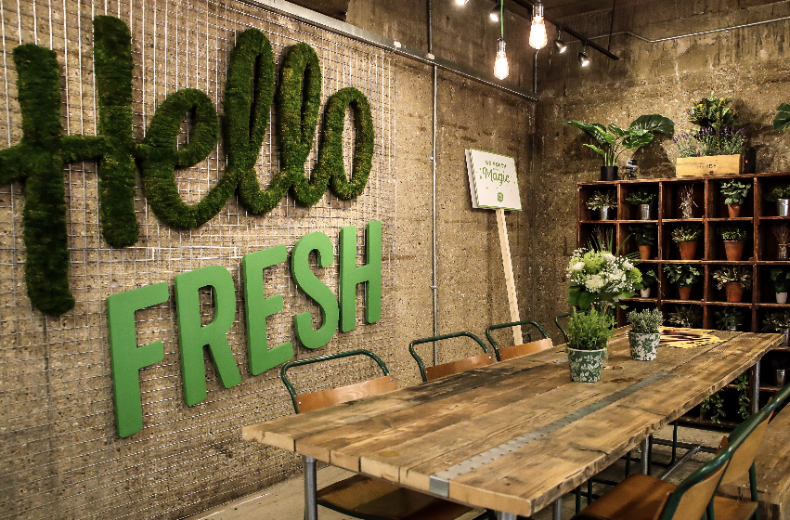
‘A lot of people feel stuck at the moment’
Sara Tate, European Transformation Practice Partner at TwentyFirstCenturyBrand, on why storytelling drives brand transformation.


Shopping tends to mean different things to different people. It can be essential, a hobby or just a downright waste of time. With the rise of online and mobile shopping (the Globalwebindex reveals that half of online shoppers, shop on mobile), people can sit at home and order everything on their wish list, without even having to get dressed to walk down to the shops.
According to the Office for National Statistics, UK shoppers’ online spending has reached £1 billion a week. Today’s shoppers favour social media and peer recommendations, encouraging brands to make shopping in stores a more social experience.
Shoppers are faced with a myriad of choice every time they walk into a store or down a high street. Different messages are shouted from window fronts, print and packaging. But what really makes a shopper go into a store? Is it pre-planned? In reality, do we even need to go to a store anymore?
The future high street won’t just offer things to buy, it will provide unique experiences. Brands are beginning to look beyond products and focus more on the lives of their customers, creating destinations they will enjoy visiting.
Below we’ve picked out the key trends for the future of shopping and brought them to life through some of the most creative and effective brand campaigns.

Experiential shopping allows the brand to be brought to the customer. In an un-intrusive fashion, shoppers can experience a brand, without the obligation to part with their cash. The experience allows shoppers to understand a brand and establish a new kind of relationship.
Pop-up installations and stores give brands an opportunity to immerse shoppers in their world and heritage, as well as raising general awareness. This is what Live & Breathe, with M&C Saatchi PR, did for the House of Peroni. Now in its seventh year, the fully immersive and experiential space brings the “authentic taste of Italy” to customers around the UK.
R/GA London worked with Guinness on an in-store VR experience to place the shopper within the innovative story behind the brand. The dynamic activation was designed to appeal to disengaged customers, who may not ordinarily have entered the Guiness store.
Internet shoppers, more and more, are turning to social media to research new brands and products. Social commerce fits into our existing online behaviour, making it easier to find the products we love without leaving the platforms we spend time on. Facebook Messenger introduced an in-app buying option and Shop Now button, helping to keep shoppers on their platfrom for even longer.
Ted Baker worked with Poke to harness the ever-expanding reach of Instagram. Their latest campaign, Keeping up with the Bakers, is a shoppable film and corresponding Instagram Story that fans could follow in the same way they would a TV soap. It was art directed to fit the Instagram format, and to appear as part of a conversation social shoppers were already invested in.

In today’s world, it is, more often than not, the an online experience that drives people to purchase more belongings. But how do you capture that same online feeling in a physical space? Not on the High Street championed this idea with Open Door, a pop-up installation that put their online customers into a physical shopping environment.
More online stores are starting to create a physical presence within the market. Hot Pickle worked with Hello Fresh to design a physical store for the digital brand. The store enabled Hello Fresh to gauge their customers’ response to its new products, as well as increasing the overall awareness of the brand.
With technology has come both convenience and opportunity. Brands can now harness technology to create something new and exciting, whether that’s an experience or an entire store. Amazon Go is the conglomerate’s first branded physical store that uses the same tech as a self-driving car. The store, available to Amazon employees, has no lines or checkouts; you simply grab what you want and go.
Tech also allows brands to be memorable and to play with their brand idea, something that Cancer Research UK did with their campaign Tap to Beat Cancer. Created by Kinetic and MediaCom, Cancer Research UK storefronts were transformed into donation points, allowing shoppers to tap their cards on the screen and donate £2 to the charity.
Shoppers want to feel like part of a community; it’s this sense of community that brands aim to generate in store by forming closer relationships with customers and encouraging them to be affiliated with their brand. The exercise brand Lululemon champions this with their in-store exercise classes. Shoppers get to engross themselves in the world of yoga and the sessions give Lululemon an authority in the space.
John Lewis recognised that, although people loved the brand, they weren’t coming into the stores. That all changed when the brand shifted their focus to the Christmas campaigns. Run by adam&eveDDB, the campaigns now ensure that brand makes 40% of their profits in the 5 weeks around Christmas, as Craig Inglis, Customer Director at John Lewis outlined at Cannes Lions this year. The campaigns infiltrate all media, on social, through merchandise, and right onto the shop floor. It is an example of a true collaboration between various teams, from marketing, to operations and staff training.

Shopping with children can be difficult, so Sainsbury’s is finding innovative ways to be helpful, to encourage shoppers to choose them over other supermarkets. Haygarth worked with Disney’s Finding Dory at Sainsbury’s to make the weekly shop less stressful for parents. They created a Finding Dory themed play area to keep the children entertained, allowing the parents to shop in peace.
Rosie Lee and Nike created a visual centre in China to celebrate International Children's Day 2016, appealing to parents to give the gift of sport to their children. The event engaged the parents as consumers, as well as entertaining the prime target audience of the event, the children.
Looks like you need to create a Creativebrief account to perform this action.
Create account Sign inLooks like you need to create a Creativebrief account to perform this action.
Create account Sign in